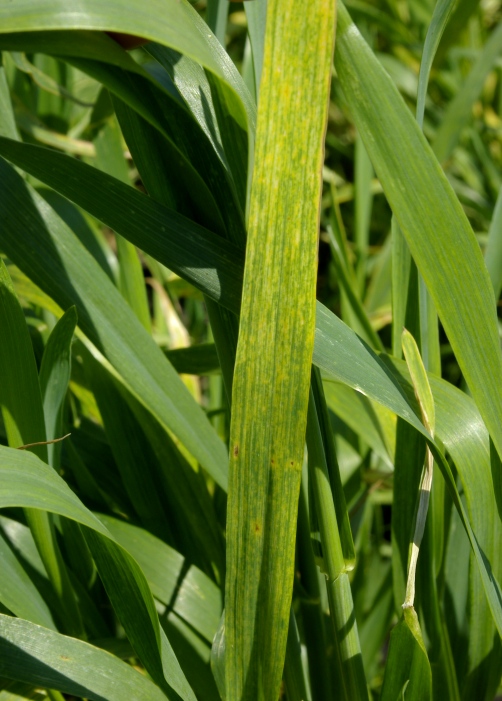Manitoba Insect and Disease Update: May 21, 2013
- John Gavloski, Entomologist
Manitoba Agriculture, Food and Rural Initiatives
Phone: (204) 745-5668
Fax: (204) 745-5690. - Holly Derksen, Plant Pathologist
Manitoba Agriculture, Food and Rural Initiatives
Phone: (204) 750-4248
Fax: (204) 745-5690
Recent Insect and Plant Pathogen Activity
Cereals

Figure 1. Characteristic symptoms of Wheat Streak Mosaic Virus.
Alfalfa One of the focuses at this year’s Crop Diagnostic School will be diseases in alfalfa. It’s always preferable to be able to show live plants with disease symptoms, but we aren’t always “lucky” enough to have these diseases show up in our demonstration plots. Please contact myself (holly.derksen@gov.mb.ca) or Glenn Friesen (glenn.friesen@gov.mb.ca) if you come across any disease issues in your alfalfa stands this year. We are not picky and are hoping to show foliar diseases (leaf spots, stem blights, etc.) as well as root/crown diseases which may be showing up as poor stands or wilting. If you see anything suspicious out there let us know and we’d be happy to take some plants off your hands. Thanks!
Surveys and Forecasts
So far there have been no reports of insect levels of concern to crops in Manitoba, or of populations of crop feeding insects potentially blowing in. We have had some winds from the south, but there have been no reports of populations of aster leafhoppers moving towards Manitoba, as happened early last year.Research
Cutworms: Cutworms are needed for a project studying parasitism in our local populations of cutworms. This project aims to gain a better understanding of cutworm parasitoids, and whether there are ways we can create conditions to enhance levels of these parasitoids. So please let us know if you are finding cutworms in any fields. Save some for the study, or we will come to the field to collect them. Please contact Dr. Barb Sharonowski at the University of Manitoba (204-474-7485) or myself (204-745-5668).
Display Language Toggle: No
